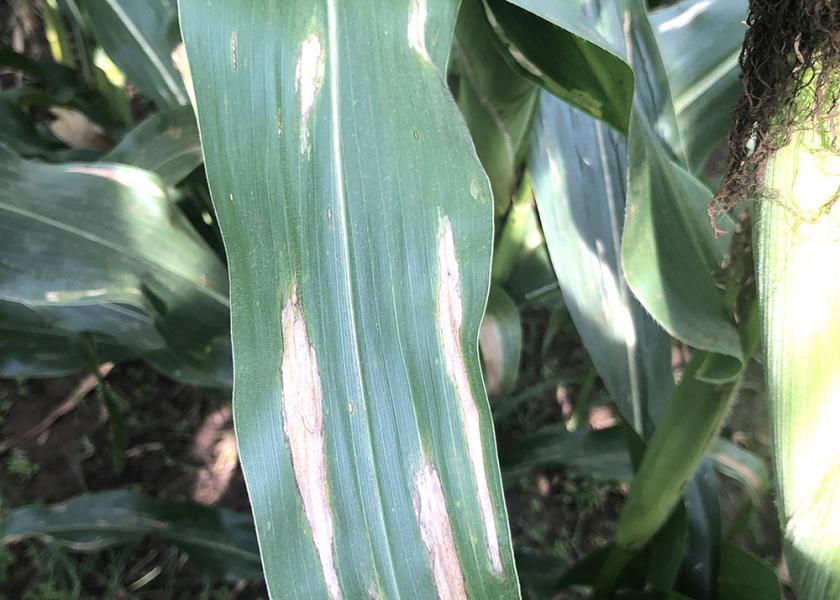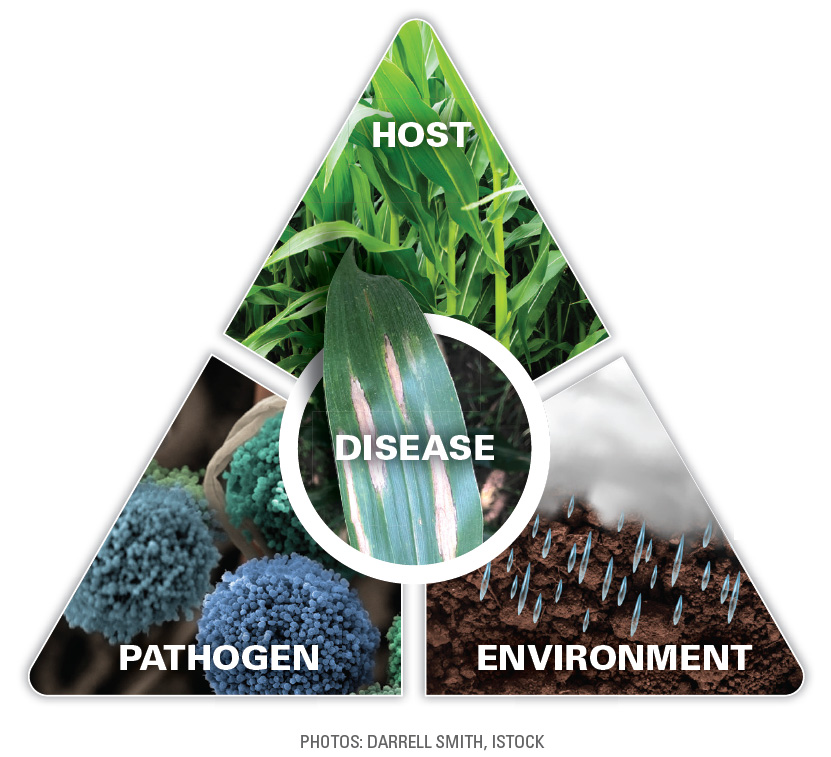The Correlation (Or Lack Of) Between Soil Health And Fungicide Use

During a field day this past summer, a farmer asked Ken Ferrie, “Can a soil test help determine the need for a fungicide application, and does healthy soil correlate with less need for fungicide?”
To find answers to these questions, start with understanding the disease triangle, says Ferrie, Farm Journal Field Agronomist. You must have the disease present, a host (crop) and the right conditions to trigger a disease outbreak. Soil health falls under the area of conditions, and soil tests can help identify susceptible conditions.
Soil tests do not detect the presence of disease or tell you disease is present in the field, Ferrie says. Fields with good soil health can have as much disease present as an unhealthy field. Simply, healthy soils do not prevent disease from moving into a field.
“What we know is healthy plants handle stress better than unhealthy plants,” he says. “This was evident in our 2021 fertility plots, as we dealt with a toxic mixture of multiple diseases on top of heavy tar spot pressure. Some of our nitrogen (N) plots made an additional 30 lb. of N look like a fungicide application when it came to keeping corn greener longer.”
DISEASE DEFENSE
Calcium and potassium play a big part in disease defense, Ferrie says.
“While we don’t see many calcium deficiencies in Illinois, we do see potash deficiencies,” he says. “A soil test can tell us which farms are going to come under more stress due to a lack of nutrient uptake.”
Low potash-testing fields will have more trouble than those fields where the potash is adequate. Fields that are acidic and need limestone will be more susceptible to disease pressure. Fields that run out of nitrogen during grain fill are more susceptible to disease pressure, too.
“In our test plots as we pulled N rates back, some hybrids died a month early, which knocked 30 bu. to 50 bu. off of the yield outcome,” Ferrie says.
“Many years there’s not a direct correlation between soil pH and potassium levels and yield — until you get to a year like 2021 when heavy disease pressure takes down the weak corn first,” he adds.
LOW FERTILITY = LOW YIELDS
Fields with low soil tests tend to get in trouble first, with premature death and down corn. The better your overall fertility, the more disease pressure your field can handle.
“But if the conditions are right and the crop is susceptible to a disease, you’ll have an outbreak,” Ferrie says. “Fungi-cides and good fertility will lessen the impact of the disease outbreak, but they will not eliminate it. Balanced fertility is just one of the tools we use to handle diseases, along with hybrid selection, fungicides, residue management and, of course, scouting.”








